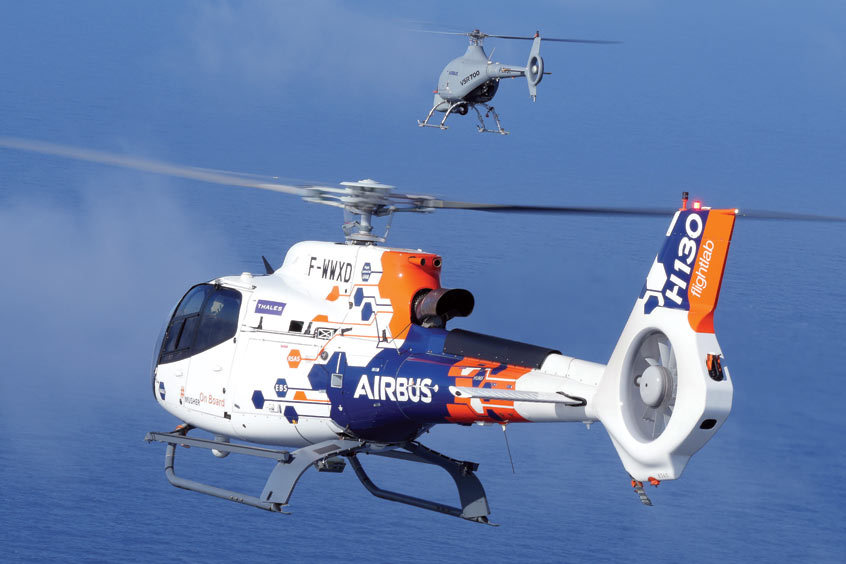Why visit ACE ’25?

Airbus Helicopters and its partners have conducted a full scale demonstration of a manned-unmanned teaming (MUM-T) system developed as part of a project funded by the European Union and code-named MUSHER. The demonstration took place in France and Italy from 30 September to 9 October and involved multiple manned helicopters and unmanned systems connected to a single MUM-T network.
“Operating helicopters and unmanned aerial systems in concert provides valuable additional mission capabilities such as increased situational awareness with UAS sharing video in real time for improved decision-making, all while preserving critical assets and resources,” says CEO Bruno Even. “The success of the MUSHER demonstration is a major step forward for our ambition at Airbus, which is to field MUM-T capabilities by bringing European industrial know-how together for the benefit of military and civil customers.”
The experiment was led by Airbus, which deployed the H130 FlightLab as a manned platform and the VSR700 unmanned aerial system (UAS) on a DGA test range. Meanwhile, Leonardo performed the demonstration with a helicopter and an optionally piloted vehicle. Thales, coordinator of the MUSHER project, provided a supervision station and a mission debriefing station. Space Applications Services was in charge of the mission preparation station. Indra led simulation activities in preparation for the demonstration, while ONERA provided studies on crew workload.
The MUSHER demonstration consisted of various scenarios involving the different aircraft flying simultaneously in France and in Italy. The missions were based on concepts of operations defined by the ministries of defence of France, Italy and Spain. One scenario, for example, showcased UAS and manned helicopters for an anti-piracy mission. The UAS was initially conducting a surveillance mission. Once it spotted suspicious activity on a boat, the manned helicopter joined the scene and took full control of the UAS in preparation for an intervention.
The in-flight testing aimed at demonstrating levels of interoperability (LOI) 2 to 4, from direct receipt of UAS data by the manned helicopters and the ground station, to the control and monitoring of the UAS from the helicopters. The demonstration also served to prove that manned helicopters and UAS from different companies and different countries, operating in distant areas, could be integrated within a single MUM-T system.
MUSHER is a project launched in the frame of the European Defence Industrial Development Programme launched by the European Commission in December 2021. The project aims at developing a generic European MUM-T system that can operate robustly in multiple environments (civil, military or mixed), while reducing the crew’s workload and delivering maximum capacity in operation.